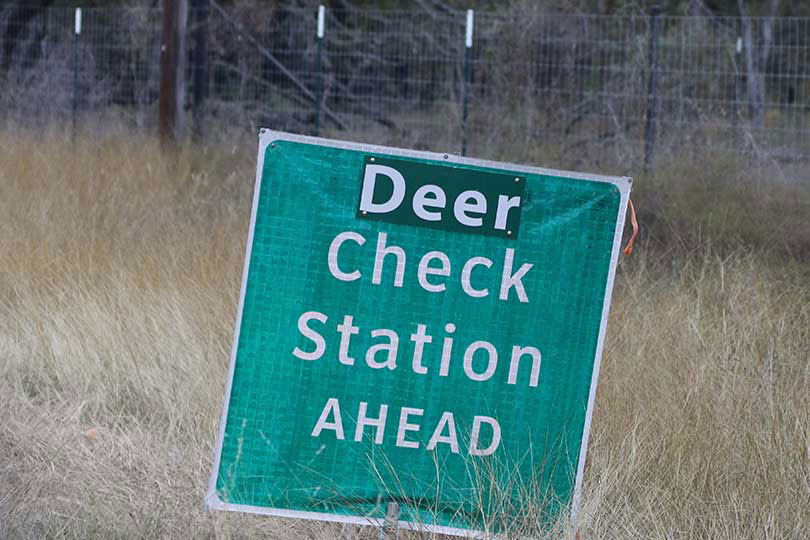By Jessica Domel
Multimedia Reporter
The Texas Parks and Wildlife Department (TPWD) is now accepting comments on a proposal that would create and expand Chronic Wasting Disease (CWD) zones following the detection of the neurological disease in free-ranging deer and at breeding facilities and release sites.
According to the department, if the proposal is passed by the TPW Commission at its meeting Aug.24-25, these changes would enhance efforts to monitor and contain CWD in portions of Bandera, Duval, Jim Wells, Kimble, Live Oak, McMullen, Medina and Uvalde counties.
Proposed additions and changes
The proposal calls for an extension of the current containment zone in Medina County in response to the detection of CWD in a free-ranging white-tailed deer in the zone in early February.
The zone expansion, which would impact parts of Bandera, Medina and Uvalde counties, would include all land within five miles of a CWD-positive case in native free-ranging deer.
TPWD said the zone expansion is necessary to provide additional CWD surveillance within the area.
It would impact an area north and west of Hondo, an area that includes Sabinal and some land north of the city, and an area north, south and west of Uvalde. A map is available within TPWD’s proposal here.
The department is recommending a new surveillance zone that would impact parts of Duval, Jim Wells, Live Oak and McMullen counties.
That recommendation is the result of the detection of CWD in a deer breeding facility in Duval County in 2021.
The zone would include all land between U.S. Highway 281 to the east, State Highway 44 to the south, U.S. Highway 59 to the west and FM Road 624 to the north.
Alice and Freer would be included to allow hunters to take their deer for processing in those cities.
Kimble County will fall into a new containment zone and an expanded surveillance zone if the proposal is passed later this month.
A white-tailed deer at a deer breeding facility in Kimble County tested positive for CWD in 2020. Two white-tailed deer then tested positive for CWD at a related release site earlier this year.
That’s prompted the proposal of the new containment zone that would include all land within two miles of the release site.
The department is also recommending expanded the current surveillance zone in Kimble County to include the city of Junction.
This would enable hunters to take their deer to Junction to be processed without carcass movement restrictions.
Zone requirements
Containment zones, like the one in Medina County, are established when CWD has been detected or TPWD has determined that CWD detection is probable using best available science and data.
Surveillance zones are areas where TPWD has determined the presence of CWD could be reasonably expected.
Hunters who bag a CWD-susceptible species in a containment or surveillance zone must quarter their deer before leaving the zone and take it to a TPWD check station within 48 hours of harvest so it may be tested for CWD.
What is CWD?
CWD is a degenerative, neurological disease that impacts some cervid species including white-tailed deer, mule deer, moose, red deer, sika and their hybrids.
It is highly contagious and part of the family of diseases that includes scrapie in sheep and bovine spongiform encephalopathy (BSE) in cattle.
According to the department, CWD never goes dormant. It can lie on the landscape for years, potentially infecting susceptible species.
An animal infected with CWD may not show outward symptoms for years after the initial infection.
Symptoms include: progressive weight loss; stumbling or tremors with a lack of coordination; excessive thirst, salivation or urination; loss of appetite; teeth grinding; abnormal head posture; and/or drooping ears.
TPWD reports there is currently no evidence CWD poses a risk to humans or non-cervids, but the Centers for Disease Control and Prevention urges hunters not to eat meat from infected animals.
As of July 2022, 371 captive or free-ranging cervids–members of the deer family–in 14 Texas counties have tested positive for CWD.
Public comment
TPWD will accept comments on the proposed changes to the state’s CWD containment and surveillance zones through 5 p.m. Aug. 24 here: tpwd.texas.gov/business/feedback/public_comment/proposals/202208_cwd.phtml.
The commission will discuss the proposal at their work session Aug. 24 and will consider the proposal at their Aug. 25 meeting.


What is the latest information on CWD in Duval county Texas
You can reach out to the Texas Parks & Wildlife Department for more information about Duval County.